
piranka/E+ via Getty Images
By Matt Sullivan
The future of blockchains is likely a multi-chain future, which means the blockchain that solves interoperability between blockchains has a massive opportunity. Cosmos (ATOM-USD) is in pole position to be the “blockchain of blockchains” in a multi-blockchain world.
The Cosmos blockchain is a unique, proof-of-stake blockchain focusing on an interoperable, multi-blockchain future. It was founded by Jae Kwon all the way back in 2014. The native token for the Cosmos Hub blockchain is ATOM-USD. In the evolution of application-based blockchain networks, Cosmos could be the next step beyond Ethereum (ETH-USD) and a direct competitor of Polkadot in the sense that it is a “blockchain of blockchains.” Cosmos solves the problem of having to use cross-chain bridges in a multi-blockchain world, which have proven time and time again to be a security risk and likely unsustainable long-term (see Wormhole hack, Ronin bridge hack, and Vitalik Buterin’s long-held and widely shared concerns with cross-chain bridges). If you believe the world has a multi-chain future, then Cosmos may become the dominant player in that space.
The Cosmos Structure
There are five key components of the Cosmos structure that lay the foundation for how it functions:
1) Tendermint
Tendermint is both a company and a blockchain software, the former building the latter. The tendermint organization is the core developer group behind the Cosmos blockchain which runs on the tendermint consensus and networking layer. This allows current and future developers to focus solely on blockchain-specific application development using a variety of programming languages via the Cosmos SDK tooling. (Key Takeaway: Cosmos is easy to build on which makes it easier to attract developers).
2) Interchain Foundation
The Interchain Foundation is the Swiss-based foundation coordinating the development of the Cosmos ecosystem.
3) Cosmos Software Developer Kit (SDK)
A multi-programming language toolkit for developers to build their blockchain-specific applications. Cosmos believes most applications will operate on their own blockchains; therefore, Blockchain interaction is where Cosmos separates itself from other networks by utilizing the Inter-blockchain (IBC) protocol.
4) Cosmos Hub
The Cosmos hub is the core blockchain at the center of the Cosmos Ecosystem. The ATOM-USD token derives its value from facilitating transactions between blockchains on the Cosmos hub. Blockchains are connected to the Cosmos hub via the inter-blockchain protocol (IBC).
5) Inter-blockchain (IBC) Protocol
The structure that allows blockchains to transmit data and tokens between one another without having to communicate directly. More importantly, bridges are no longer needed. This was launched on the Cosmos Hub in early 2021 and already has 28 blockchains in the ecosystem.
The key takeaway is that Cosmos is built on Tendermint consensus and networking, leaving developers to focus exclusively on their application development using a variety of languages via the Cosmos SDK, which can then safely interoperate with one another via the IBC protocol.
Adoption Metrics
Users
The volume and transactions on the Cosmos Hub, based on monthly values, have been showing steady signs of increasing over the past year according to Atomscan:
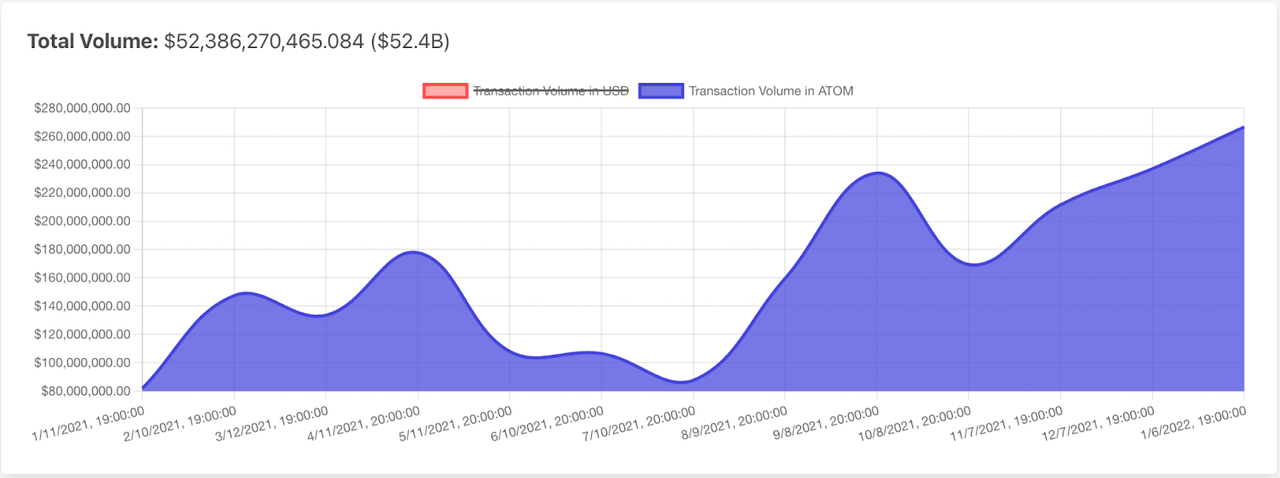
TVL cosmos
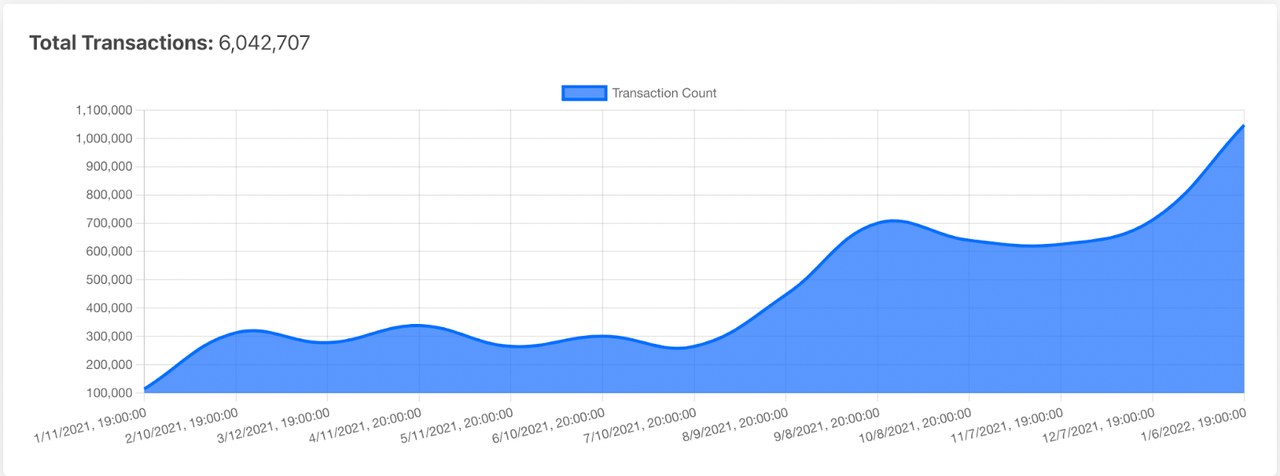
total tx cosmos
Total Value Locked (TVL) on DeFi protocols
Total value locked in blockchain applications and protocols provides a general gauge of network demand from decentralized finance ((DeFi)). DeFi generates the largest demand for blockspace at the moment behind only NFTs, and those lines are already blurring in some instances. Further, TVL on “Cosmos” is somewhat difficult to interpret. See the below image from Defi Llama:
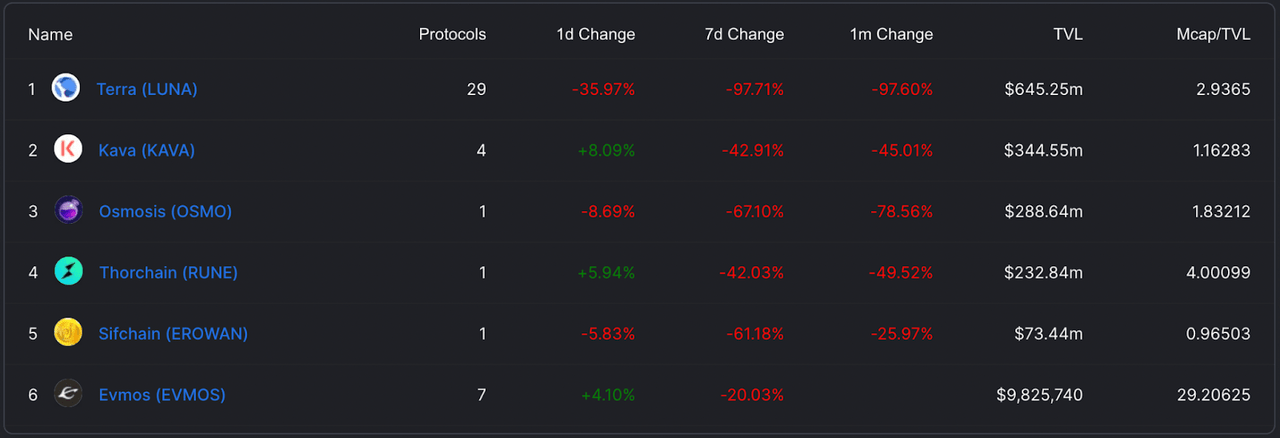
Defi Llama
These are the blockchains that have been built using the Cosmos SDK, however, they have their own blockchain tokens and therefore the demand for these tokens does not directly benefit the ATOM-USD token. However, demand for anything within the Cosmos ecosystem is beneficial long-term for ATOM-USD, particularly IBC-enabled blockchains.
Blockchains Developed in the Ecosystem
According to the Cosmos website, 49 blockchains have utilized Cosmos SDK to build their blockchains, accounting for $66 billion of total market cap. Further, there are 28 blockchains that are IBC-enabled since being launched in early 2021, accounting for $14 billion in market cap.
The most notable blockchain built using Cosmos SDK was Terra (LUNA-USD), which also included the Terra stablecoin (UST-USD). While the recent LUNA/UST collapse was unfortunate, its impact on ATOM-USD is a reduced demand for the overall Cosmos hub ecosystem. Importantly, the LUNA/UST collapse has no structural or security impact relative to ATOM-USD or the Cosmos ecosystem.
Additional noteworthy application-specific blockchains built using Cosmos SDK include Binance Coin (BNB-USD), Crypto.com coin (CRO-USD), Thorchain (RUNE-USD), Secret (SCRT-USD), Juno Network (JUNO-USD), Osmosis (OSMO-USD), and many others. Below is the list by market cap from the Cosmos website:
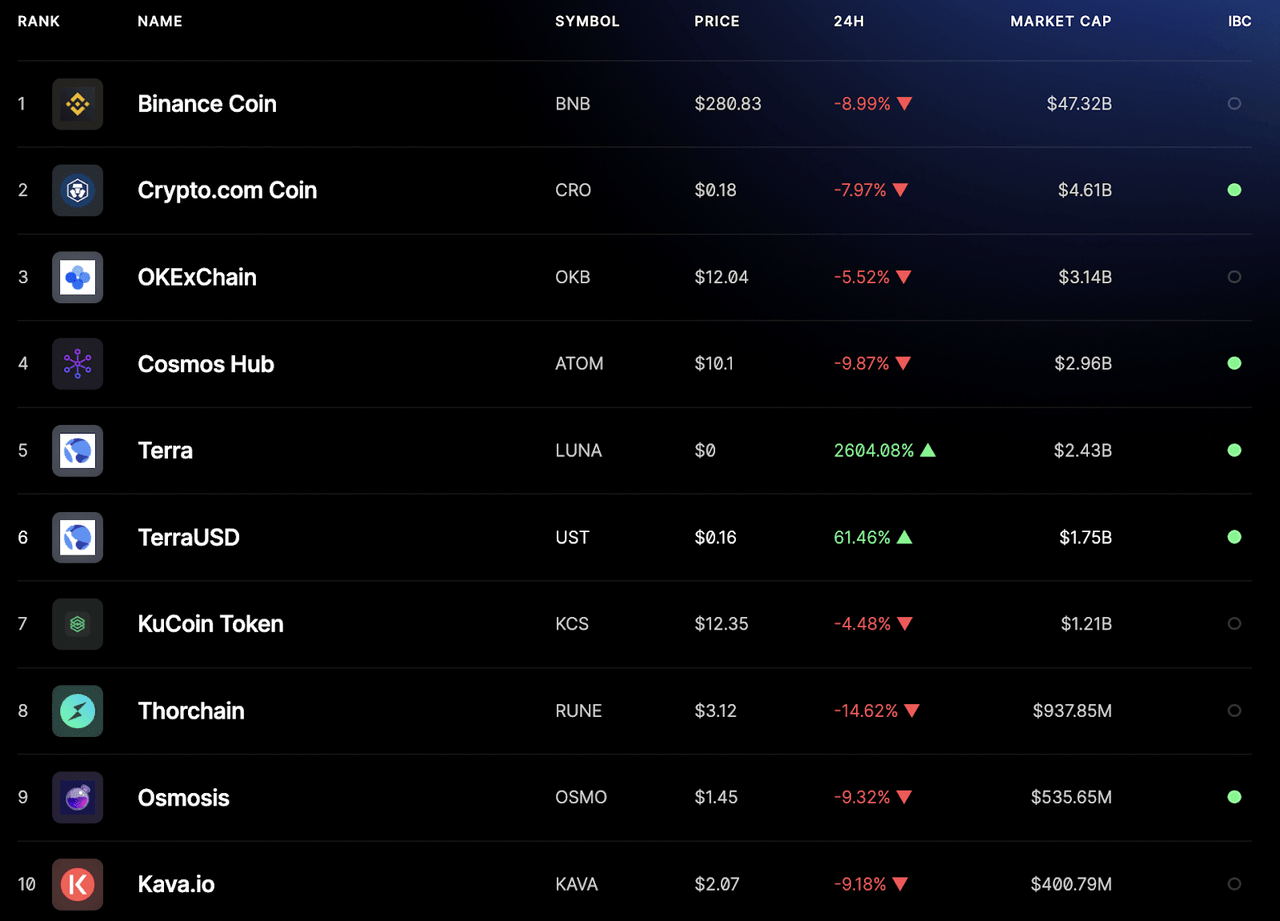
Cosmos Website
There is an expectation that blockchains built using Cosmos SDK will enable the IBC protocol over time, expanding the Cosmos ecosystem and increasing demand for ATOM-USD.
Developers
Developers have been steadily on the rise based on a variety of metrics, including number of developers, number and size of contributions, and the size of the developer community (see chart below from Messari):
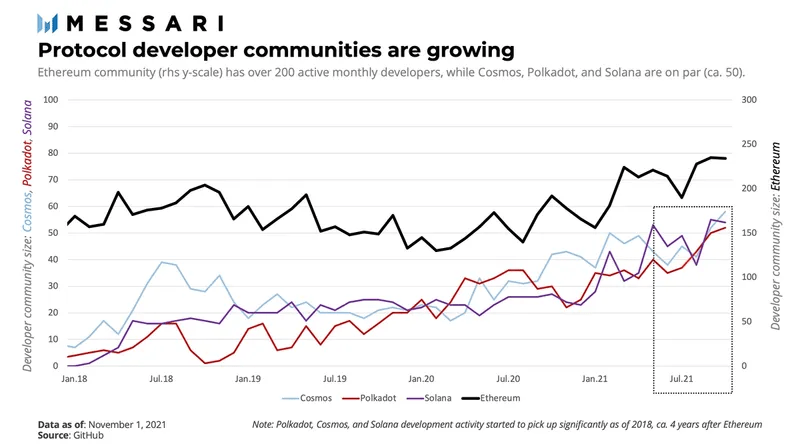
Messari research
Tokenomics
The tokenomics are not as clean as with Bitcoin (BTC-USD) since there is no maximum supply. The inflation rate of ATOM-USD (the rate at which new ATOM-USD tokens are minted) is variable between 7% and 20% based on the amount of total ATOM-USD staked. This is one of the few knocks on ATOM-USD.
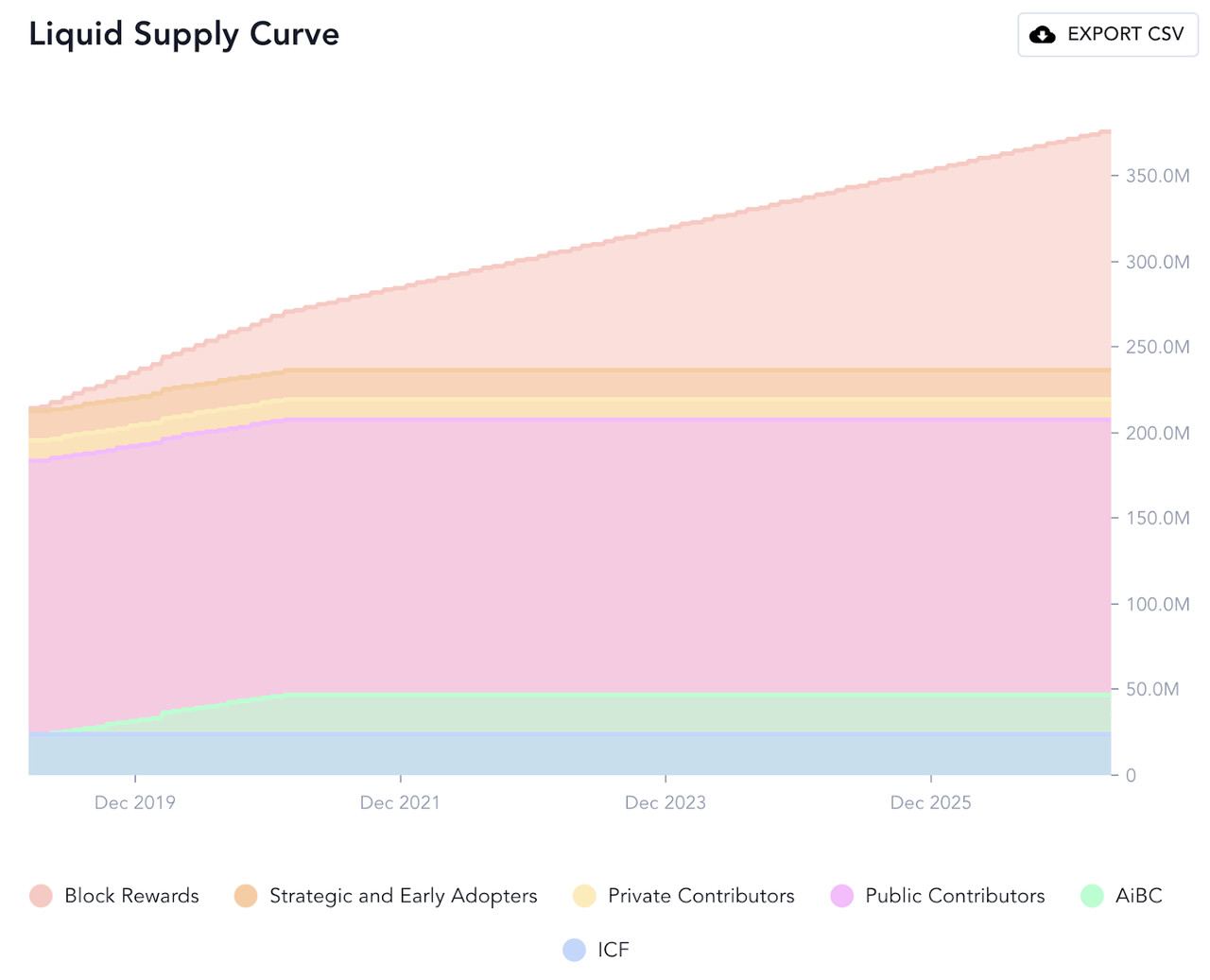
Messari Research
Token distribution
According to Atomscan, 40% of the ATOM-USD supply is held by the top 25 wallets, although some of these are likely exchanges.
What drives demand for ATOM-USD? Interoperability between the blockchains within the cosmos ecosystem. As the blockchain universe matures, interaction between blockchains will be crucial and demand should increase, putting Cosmos in a great position to benefit from the interoperability trend. Additionally, many tokens in the Cosmos ecosystem are not available on centralized exchanges like Coinbase besides ATOM-USD. That means there you must buy ATOM-USD tokens and bridge over to Cosmos to gain access to other tokens in the Cosmos ecosystem, serving as another demand driver for ATOM-USD.
Staking
Due to the continued inflation of ATOM-USD, it is recommended to stake your ATOM-USD tokens to mitigate the impact of a growing circulating supply. According to Staking Rewards, as of this writing the estimated real yield (net of the inflation rate) is approximately 5-6%.
Risks
Centralization Risk
One of the key risks to Cosmos is the lack of decentralization. There are currently 175 validators securing the network. For reference, there are over 350,000 validators supporting the Ethereum 2.0 network. At this point there is no right answer for “How much decentralization is enough decentralization?” However, being aware that Cosmos is sacrificing decentralization for greater transaction speed and lower transaction costs is crucial and should impact the sizing of the position in your portfolio because there is an elevated risk to be hacked by a 51% attack
Tokenomics
Just like in the stock market, crypto investors simply do not pay enough attention to the overall supply of a token; it is the other end of demand, which together impacts price. Cosmos validators are rewarded for securing the Cosmos Hub network in two ways: transaction fees and newly minted ATOM-USD (ie. inflation). As mentioned previously, this inflation rate can range from 7% to 20%, making it crucial that if you buy ATOM-USD, you need to be staking ATOM-USD to avoid any potential dilution.
Terra (LUNA-USD) Exposure
Terra accounted for over 90% of the total value locked on IBC-enabled blockchains before its collapse. Subsequently, the ATOM-USD token price and is now over 75% off the token’s all-time highs.
Leadership Turnover
Jae Kwon Departure: The founder of Cosmos Jae Kwon left the project in 2020 to develop a new blockchain, Gno.land. There have also been rumors over the years of infighting among leadership. This is certainly something to monitor moving forward.
Investment Recommendation
Any crypto portfolio, whether you are an NFT flipper or a long-term holder, should comprise of at least 50% of some combination of ETH-USD and BTC-USD and should likely be closer to 75%. That should be noted before any consideration of ATOM-USD in a crypto portfolio.
With that in mind, making sure you have some exposure to ETH-USD competitors who are also selling blockspace is a good idea. Cosmos is compelling because it seems like a strong bet to coexist alongside Ethereum, having Cosmos be the blockchain that connects a majority of the current and future blockchains, while Ethereum can become IBC-enabled in the future while still providing the best-in-class blockspace around.
Price
The current price is over 75% off ATOM’s all-time high, largely due to the recent selloff and somewhat direct exposure to LUNA/UST. While it will take time to recover the network demand that LUNA created, it was actually the decentralized exchange Osmosis doing the most transaction volume within the Cosmos ecosystem, nearly double that of LUNA prior to its collapse. You can see where transaction volume is coming from here.
Portfolio Sizing
ATOM-USD may be a crucial hedge against the (current) monolithic structure of Ethereum and a strong bet alongside Polkadot (DOT-USD) on a multi-blockchain future. Cosmos deserves a 2% allocation in a diversified crypto portfolio – just remember to stake it.


Be the first to comment